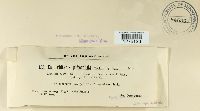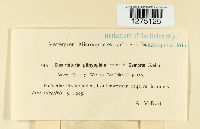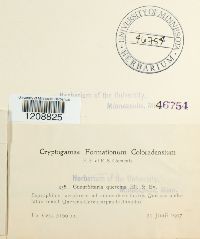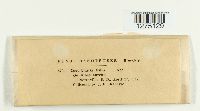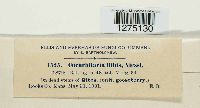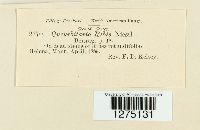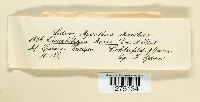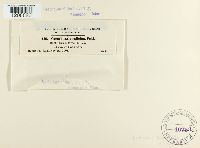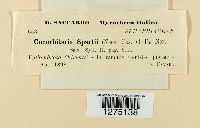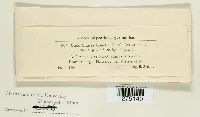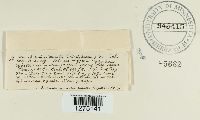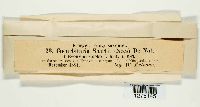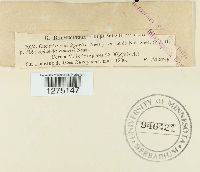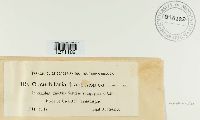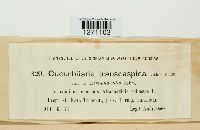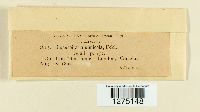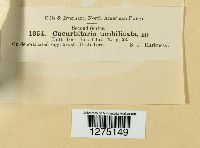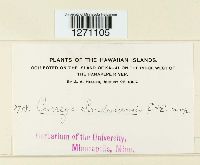University of Minnesota
http://www.umn.edu/
612-625-5000
http://www.umn.edu/
612-625-5000
Minnesota Biodiversity Atlas
Bell Museum
Dataset: MIN-Fungi
Taxa: Cucurbitariaceae
Search Criteria: excluding cultivated/captive occurrences
Bell Museum fungi | |
MIN:Fungi | Cucurbitaria morbosa (Schwein.) Ellis 946395[1275121] |
MIN:Fungi | Cucurbitaria naucosa (Fr.) Fuckel 946396[1275122] |
MIN:Fungi | Cucurbitaria pithyophila (J.C. Schmidt & Kunze) De Not. 946397[1275123] |
MIN:Fungi | Cucurbitaria pithyophila (J.C. Schmidt & Kunze) De Not. 946398[1275124] |
MIN:Fungi | Cucurbitaria pithyophila (J.C. Schmidt & Kunze) De Not. 946399[1275125] |
MIN:Fungi | Cucurbitaria protracta (Nees) Fuckel 946400[1275126] |
MIN:Fungi | Cucurbitaria protracta (Nees) Fuckel 946401[1275127] |
MIN:Fungi | Cucurbitaria protracta (Nees) Fuckel 946402[1275128] |
MIN:Fungi | Cucurbitaria quercina Ellis & Everh. 46754[1208825]Clements, F.E. 4581907-07-21 |
MIN:Fungi | Cucurbitaria ribis Niessl 946403[1275129] |
MIN:Fungi | Cucurbitaria ribis Niessl 946404[1275130] |
MIN:Fungi | Cucurbitaria ribis Niessl 946405[1275131] |
MIN:Fungi | Cucurbitaria ribis Niessl 946406[1275132] |
MIN:Fungi | Cucurbitaria ribis Niessl 946407[1275133] |
MIN:Fungi | Cucurbitaria rosae G. Winter & Sacc. 946408[1275134] |
MIN:Fungi | Cucurbitaria rufofusca (Fr.) De Not. 946410[1275135] |
MIN:Fungi | Cucurbitaria rufofusca (Fr.) De Not. 946411[1275136] |
MIN:Fungi | Cucurbitaria salicina Fuckel 46753[1208826]Bartholomew, E. 16161901-11-20 United States, Kansas, Rooks |
MIN:Fungi | Cucurbitaria sorbi P. Karst. 946412[1275137] |
MIN:Fungi | Cucurbitaria spartii Fuckel 46752[1208802]Krieger, W. 17211901-07-00 Germany, Saxony, Kohlberge by Pirna |
MIN:Fungi | Cucurbitaria spartii Fuckel 946413[1275138] |
MIN:Fungi | Cucurbitaria spartii Fuckel 946413[1275139] |
MIN:Fungi | Cucurbitaria spartii Fuckel 946414[1275140] |
MIN:Fungi | Cucurbitaria spartii Fuckel 946415[1275141] |
MIN:Fungi | Cucurbitaria spartii Fuckel 946416[1275142] |
MIN:Fungi | Cucurbitaria spartii Fuckel 946417[1275143] |
MIN:Fungi | Cucurbitaria spartii Fuckel 946418[1275144] |
MIN:Fungi | Cucurbitaria spartii Fuckel 946419[1275145] |
MIN:Fungi | Cucurbitaria spartii Fuckel 946420[1275146] |
MIN:Fungi | Cucurbitaria spartii Fuckel 946421[1275147] |
MIN:Fungi | 946422[1271102] |
MIN:Fungi | 946423[1271103] |
MIN:Fungi | Cucurbitaria ulmicola Fuckel 946424[1275148] |
MIN:Fungi | Cucurbitaria umbilicata Ellis 946425[1275149] |
MIN:Fungi | Curreya sandwicensis Ellis & Everh. 946502[1271105] |
Google Map
Google Maps is a web mapping service provided by Google that features a map that users can pan (by dragging the mouse) and zoom (by using the mouse wheel). Collection points are displayed as colored markers that when clicked on, displays the full information for that collection. When multiple species are queried (separated by semi-colons), different colored markers denote each individual species.


